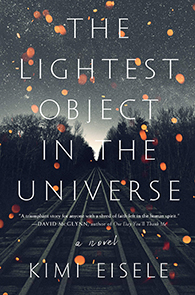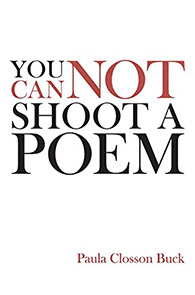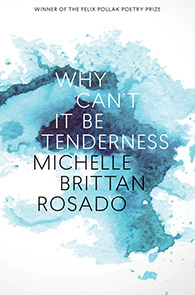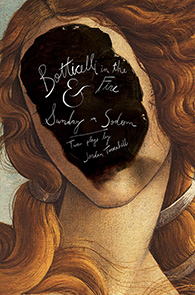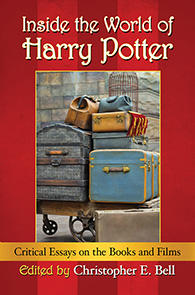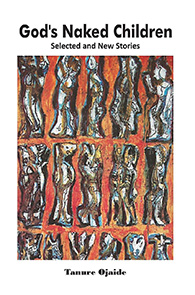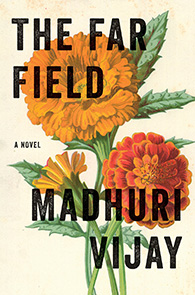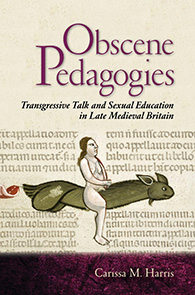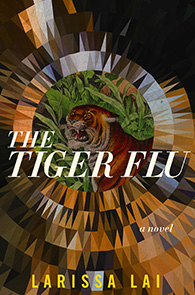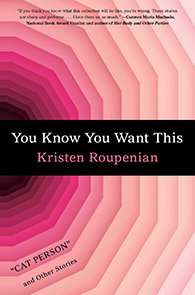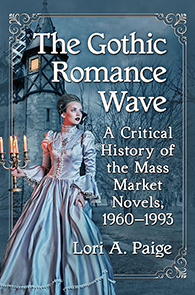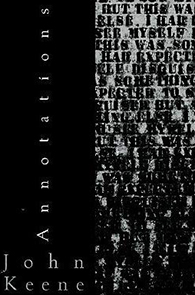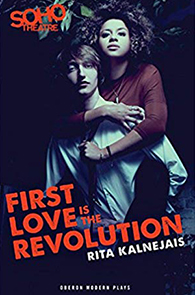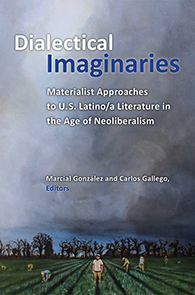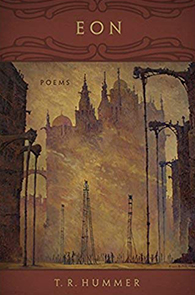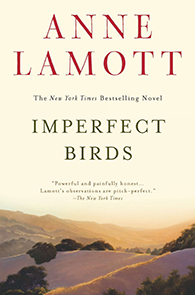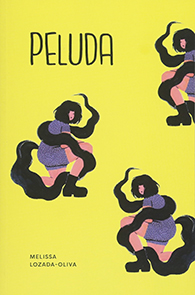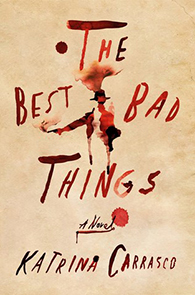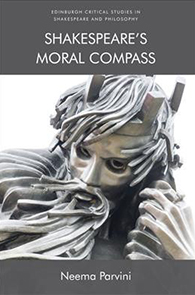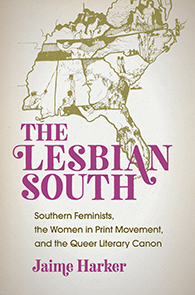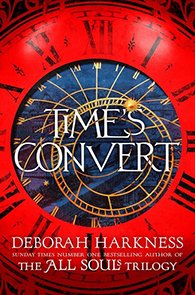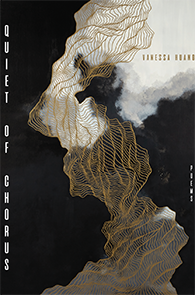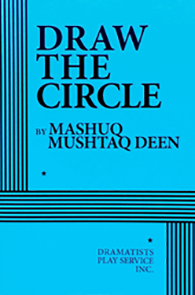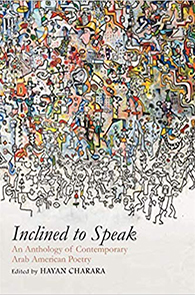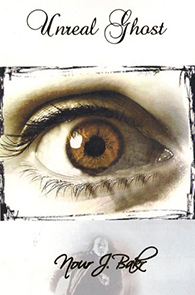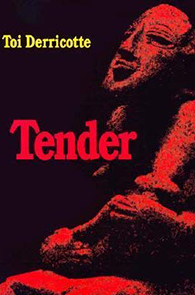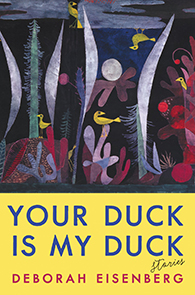Tag: books
Supporting open access book publishing at UC Berkeley: Spring 2024 update
UC Berkeley supports a variety of ways our authors can participate in open access publishing. At its heart, open access literature is “digital, online, free of charge, and free of most copyright and licensing restrictions” (Suber, 2019). Open access materials can be read and used by anyone.
But you might be wondering, why is UC Berkeley concerned about trying to make research more openly available and accessible? Well, one fundamental reason is that the research and teaching mission of the UC includes the aim of “transmitting advanced knowledge,” and as part of doing that, our faculty, researchers, and students create and share their scholarship.
This system of scholarly publishing includes traditional publications such as peer-reviewed academic articles, scholarly chapters or books, and conference proceedings. It also includes other types of publications such as digital projects, data sets and visualizations, and working papers.
In this blog post, we first touch briefly on how the UC Berkeley Library is fostering open access publishing for journal articles, and then dive deeper into the innovative ways we’re supporting open access publishing for books.
Library Support for Open Access Articles
UC Berkeley offers a wide range of support to help authors publish scholarly articles. The UC’s system wide Open Access Policies ensure that university-affiliated authors can deposit their final, peer-reviewed research articles into eScholarship, our institutional repository, immediately upon publication in a journal. Once they’re in eScholarship, the articles may be read by anyone for free.
As of February 2024, the University of California has entered into 24 transformative open access publishing agreements with scholarly publishers. These agreements permit UC corresponding authors to publish open access in covered journals, with the publishing fees being covered in part (or in full) by the UC. In fiscal year 2022-23 UC Berkeley authors published 348 open access articles as a part of these system wide open access publishing agreements.
Locally, the UC Berkeley Library continues to offer the Berkeley Research Impact Initiative (BRII). This program helps UC Berkeley authors defray article processing charges (APCs) that are sometimes required to publish in fully open access journals (note that BRII doesn’t reimburse authors for publishing in “hybrid” journals—that is, subscription journals that simply offer a separate option to pay to make an individual article open access). This past year BRII provided funding for the publication of 60 open access articles. UC Berkeley authors can take advantage of BRII assistance where there is no other system wide open access agreement in place.
Library Support for Open Access Books
We know that not all University of California authors are publishing journal articles, and many disciplines—such as arts, humanities, and social sciences—focus on the scholarly monograph as the preferred mode of publishing. Some open access book publishers charge authors (or an author’s institution) a fee in exchange for publishing the book open access, similar to the practice of academic journal publishers charging an “author processing charge” to make a scholarly article open access.
Recently, the University of Michigan Press shared an analysis of book author impressions of open access. They found that authors can realize a wide variety of benefits with OA publishing. For example, authors viewed OA as a means to achieve a global reach with their scholarship, build relationships within their academic discipline, garner more citations, make their scholarly books more affordable for learners, improve accessibility for print-disabled users, and more.
UC Berkeley is supporting authors who wish to publish their books open access. The library provides funding assistance and access to publishing platforms and tools for UCB authors to make their books open access.
Berkeley Research Impact Initiative books
Above we mentioned how the Berkeley Research Impact Initiative helps UC Berkeley authors publish articles in fully open access journals. BRII funding can also be used to help authors pay book processing charges (up to $10,000/book) so that their monographs can be published open access. In the last year, several UCB-authored books have been published open access in part due to BRII funding support.
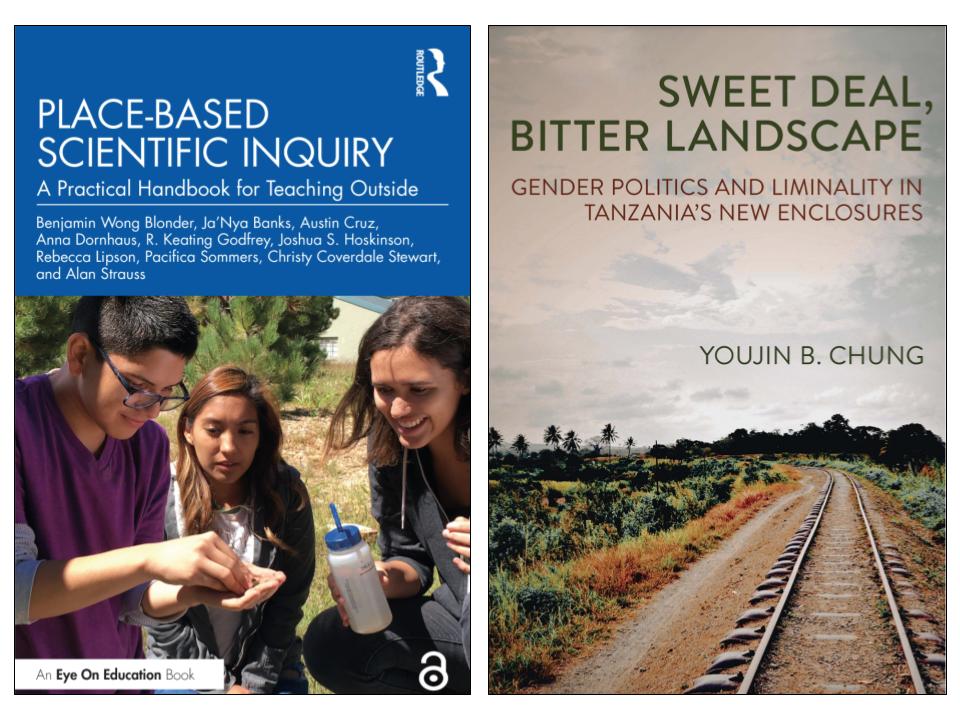
- Prof. Benjamin Blonder from the Department of Environmental Science, Policy, and Management (ESPM) published Place-Based Scientific Inquiry: A Practical Handbook for Teaching with Routledge (Taylor & Francis). The book is shared under the Creative Commons Attribution (CC BY) license and available as a free download.
- Prof. Youjin B. Chung, also from ESPM, published Sweet Deal, Bitter Landscape with Cornell University Press. The book is shared under the Creative Commons Attribution-NonCommercial-NoDerivatives (CC BY-NC-ND) license and available as a free download.
Springer Open Access books
In 2021, the UC Berkeley Library entered into an institutional open access book agreement with Springer Nature. The partnership provides open access funding to UC Berkeley affiliated authors who have books accepted for publication in Springer, Palgrave, and Apress imprints. This means that these authors can publish their books open access at no direct cost to them. The agreement covers all disciplines published by Springer. All the books are published under a Creative Commons Attribution (CC BY) license for free access and downloading. In the last year, several UCB-authored books have been published open access as a result of the UCB-Springer agreement.
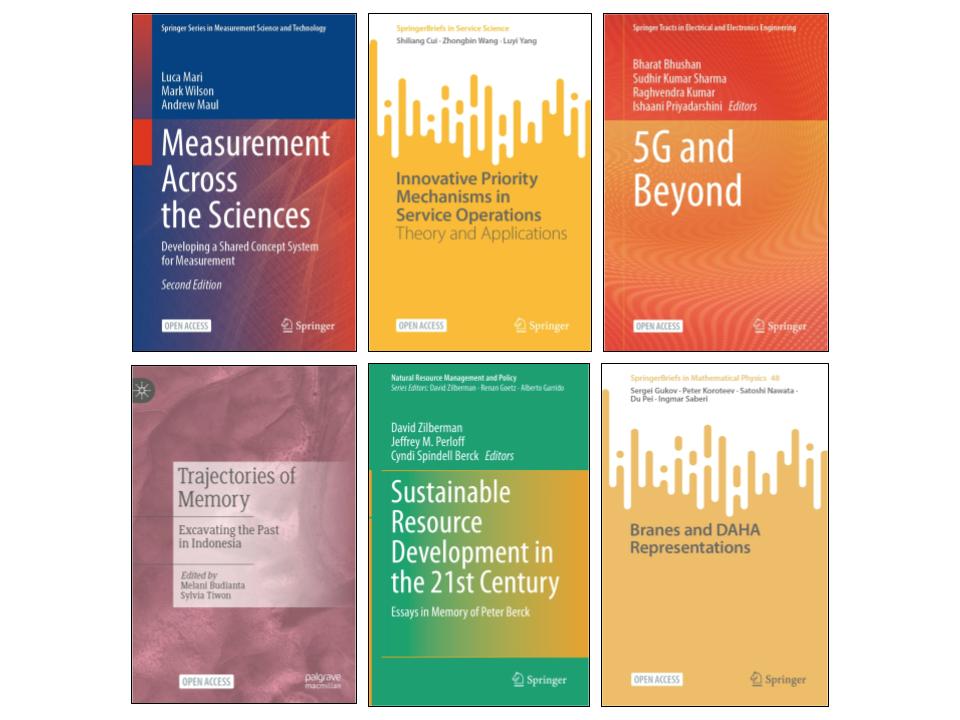
- Prof. Mark Wilson from the School of Education published Measurement across the Sciences (2nd Edition) with Springer.
- Prof. Luyi Yang from the Haas School of Business published Innovative Priority Mechanisms in Service Operations with Springer.
- Prof. Ishaani Priyadarshini from the School of Information published 5G and Beyond with Springer.
- Prof. Sylvia Tiwon from the Department of South & Southeast Asian Studies published Trajectories of Memory: Excavating the Past in Indonesia with Palgrave Macmillan.
- Profs. David Zilberman (Department of Agricultural and Resource Economics), Jeffrey M. Perloff (Department of Agricultural and Resource Economics), and Cyndi Berck published Agriculture & Resource Economics Sustainable resource development in the 21st century: Essays in memory of Peter Berck with Springer.
- Prof. Peter Koroteev from the Department of Mathematics published Branes and DAHA Representations with Springer.
University of California Press
UC Berkeley Library continues to support open access book publishing via Luminos, the open access arm of the University of California Press. The Library membership with Luminos means that UC Berkeley authors who have books accepted for publication through the UC Press can publish their book open access with a heavily discounted book processing charge. When combined with additional funding support through BRII, a UC Berkeley book author could potentially publish their book open access with the costs being covered fully by the Library. Luminos books are published under Creative Commons licenses with free downloads.
Pressbooks platform & workshops
The UC Berkeley Library hosts an instance of Pressbooks, an online platform through which the UC Berkeley community can create open access books, open educational resources (OER), and other types of digital scholarship.
The Office of Scholarly Communication Services OSCS continues to offer a bi-annual Pressbooks workshop and demo where participants can learn how to navigate the platform and create and publish their own eBooks and open educational resources. (Note: the next Pressbooks workshop is happening on April 9, 2024. Sign up now if you’re interested!)
Every year during the fall semester OSCS hosts an author panel to unpack the process of turning a dissertation into a book. One of the topics discussed during the panel are options for open access publishing. Here’s a recording of last year’s panel discussion.
UC contributing to the broader ecosystem of open access book publishing
A near term goal of the UC Libraries is to strategically advance open scholarship by extending its support for OA book publishing. At the systemwide level, the UC is supporting several open access book publishing ventures, including Opening the Future, MIT’s Direct to Open, and the University of Michigan Press’ Fund to Mission. In general, these models secure investments from libraries or other stakeholders, and agree to publish some or all of their frontlist books open access, with limited or zero direct cost to the authors. The backlist books are made accessible to participating institutions.
Wrapping up
In this post, we highlighted several ways that the University of California—and specifically UC Berkeley—is supporting scholarly authors to create and share open access books. In addition to providing financial assistance, platforms, and publishing guidance, the Library is committed to promoting the broader OA book publishing ecosystem. We’ll continue to explore a variety of approaches to support the UC Berkeley community (and beyond) who wish to publish books on open access terms.
If you’re interested to learn more about how you can create and publish an open access book, visit our website or send an email to schol-comm@berkeley.edu.
LAUC-B Resolution on the Importance of Diversity in Collections

Last month, the Executive Committee of the Librarians Association of the University of California, Berkeley (LAUC-B) unanimously endorsed a resolution written by its Committee on Diversity stressing the importance of the continued acquisition of print materials during the pandemic and beyond. The statement reflected on temporary changes to the UC Berkeley Library’s collection development policies and the lasting impact they might have. LAUC-B chair Ramona Collins wrote in an email, “[. . .] the focus on acquiring more digital and fewer print resources can lead to further suppression of already underrepresented voices, topics and geographical areas.”
Faced with the prevalence of print publications from the Global South, East Asia, Central and Eastern Europe, as well as Eurasia, the spectrum of viewpoints collected and preserved by academic libraries risks becoming impoverished. “Strong and diverse collections like Berkeley’s inspire and allow researchers to immerse themselves in cutting-edge discovery and teaching,” reads the statement, “but what happens when the acquisition of diverse resources becomes vulnerable to reduced funding or reprioritization?”
Aligned with the Library’s efforts to build and provide access to collections that help scholars work against racism and discrimination, the resolution was also inspired by statements issued in the past year by library organizations such as the Seminar on the Acquisition of Latin American Library Materials (SALALM), Association of College & Research Libraries (ACRL) and others across the academic library community.
Springer Nature and UC Berkeley Library sign new open access book partnership
Cross-posted at Springer Nature.
Agreement to publish open access books across all subject areas will increase the reach and impact of future publications.
Berkeley | Heidelberg | London, 23 March 2021
Springer Nature has signed its first ever institutional open access (OA) book agreement with the University of California, Berkeley Library. The agreement will cover a broad range of book titles across all disciplines — from humanities and social sciences to sciences, technology, medicine and mathematics and, starting in 2021 and running for at least three years, will provide open access funding to UC Berkeley affiliated authors. The open access book titles will publish under the Springer, Palgrave, and Apress imprints, with initial titles set to publish later this year.
This agreement with UC Berkeley Library follows the UC systemwide landmark transformative agreement with Springer Nature announced last year to enable UC authors to publish research articles open access in over 2700 Springer Nature journals. While the transformative deal covers the publication of journal articles, books are the common or expected publishing format in some disciplines. The need to account for a variety of scholarly outputs prompted UC Berkeley Library to sign a new agreement providing direct assistance to book-publishing authors.
The books will be published under a CC BY licence and readers around the world will have free access to the books via Springer Nature’s content platform SpringerLink. With research showing that open access books are downloaded ten times more often and cited 2.4 times more, this important agreement will significantly enhance the visibility, dissemination and impact of important academic research.
Niels Peter Thomas, Managing Director Books, Springer Nature, said:
“We are delighted to be partnering with UC Berkeley Library in what is our first ever institutional partnership for open access books and our first US agreement for open access books. This represents a big step towards ensuring access to funding for book authors. By utilising our experience as the largest academic book publisher and expertise in enabling the transition to open access, we look forward to increasing the impact and reach of book authors at UC Berkeley and their research.”
Jo Anne Newyear-Ramirez, UC Berkeley Library’s Associate University Librarian for Scholarly Resources, said:
“UC Berkeley Library has been working with publishers to create sustainable and inclusive paths to open access, for both scholarly articles and books. For the past several years, through our Berkeley Research Impact Initiative, we have covered a significant portion of book processing charges for any open access book our authors publish, but this agreement with Springer Nature takes an even bigger leap forward. Under this agreement, we will cover 100% of standard publishing costs for open access books that UC Berkeley authors publish with Springer Nature for at least the next three years. This will help yield important progress on our journey to advance knowledge by making more UC Berkeley-authored books open to the world. We’re equally thrilled to be pioneers among U.S. academic institutions in entering into this type of agreement with Springer Nature.”
END
About UC Berkeley Library
The UC Berkeley Library is an internationally renowned research and teaching facility at one of the nation’s premier public universities. With 24 distinct destinations, including Doe and Moffitt libraries, The Bancroft Library, the C. V. Starr East Asian Library, and an array of subject specialty libraries, the UC Berkeley Library offers services and materials that span the disciplines. The Library holds paintings, lithographs, papyri, audio and video recordings, and books, and offers robust services that connect users with these remarkable resources — and more — to inform their research and advance their understanding of the world.
About Springer Nature
For over 175 years Springer Nature has been advancing discovery by providing the best possible service to the whole research community. We help researchers uncover new ideas, make sure all the research we publish is significant, robust and stands up to objective scrutiny, that it reaches all relevant audiences in the best possible format, and can be discovered, accessed, used, re-used and shared. We support librarians and institutions with innovations in technology and data; and provide quality publishing support to societies.
As a research publisher, Springer Nature is home to trusted brands including Springer, Nature Research, BMC, Palgrave Macmillan and Scientific American. For more information, please visit springernature.com and @SpringerNature
Contact
UC Berkeley Library: With questions about this agreement, please contact UC Berkeley Library’s Office of Scholarly Communication Services: schol-comm@berkeley.edu.
Springer Nature: Felicitas Behrendt | Communications Manager | Felicitas.behrendt@springernature.com | T +49 (0) 6221 487 9901
Rosh Hashanah and Jews of Latin America! שנה טובה ומתוקה!!!
.בָּרוּךְ אַתָּה יְיָ, אֱלֹהֵֽינוּ מֶֽלֶךְ הָעוֹלָם, בּוֹרֵא פְּרִי הָעֵץ
Barukh atah Adonai, Eloheinu melekh ha-olam, borei pri ha-eitz. (Blessed are You, Lord our God, King of the Universe, Creator of the fruit of the tree).
יְהִי רָצוֹן מִלְּפָנֶךָ, יְיָ אֱלֹהֵֽינוּ וֵאלֹהֵי אֲבוֹתֵֽינוּ שֶׁתְּחַדֵּשׁ עָלֵינוּ
.שָׁנָה טוֹבָה וּמְתוּקָה
Yehi ratzon milfanekha, Adonai Eloheinu ve-Elohei avoteinu she-tekhadesh aleinu shanah tovah umetukah (May it be Your will, Lord our God and God of our ancestors, that this be a good and sweet year for us).
Source of the postcard: Wikimedia-American Jews welcoming Russian Jews to the continent.
Today at sundown, Jews all over the world will celebrate the Jewish New Year 5781. Jews in Latin America are not an exception to this celebration. The history of Jews of Latin America and the Caribbean is that of nuanced amalgamation, adaptation while preserving the cultural and religious identities to the extent possible. Below I present you with some of the books from our Doe Library’s collections whose subject is Jews in Latin America. These books are from different parts of Latin America and the Caribbean.
- Invenciones multitudinarias : escritoras judíomexicanas contemporáneas.
- Pertenencia y alteridad : judíos en/de América Latina : cuarenta años de cambios / Haim Havni, Judit Bokser Liwerant, Sergio DellaPergola, Margalit Bejarano, Leonardo Senkman (coordinadores) ; traducción y supervisión de estilo, Florinda F. Goldberg. And the same title can be read online here.
- Más allá del Medio Oriente : las diásporas judía y árabe en América Latina / Raanan Rein (coord.) ; María José Cano, Beatriz Molina Rueda (eds.).
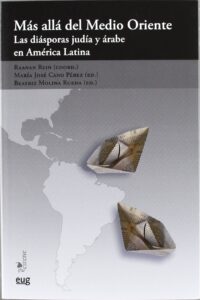
- Comunidades judías en América Latina / José Luis Piczenik.
- Encuentro y alteridad : vida y cultura judía en América Latina / Judit Bokser Liwerant y Alicia Gojman de Backal (coordinadoras) ; compilación de Hellen B. Soriano.
- Inquisición y judaizantes en América española (siglos XVI-XVII) / Ricardo Escobar Quevedo ; [prólogo de Charles Amiel].
- Poylishe Idn in Dorem-Ameriḳe : zaml-bukh tsum 25-yoriḳn yoyvl fun organizirṭn Poylishn Idnṭum in Argenṭine 1916-1941י.
- Los sefaraditas : España, el Imperio Otomano, La Argentina : tradición y cultura / María del Carmen Artigas.
- Los sefardíes en los dominios holandeses de América del Sur y del Caribe,1630-1750 / Günter Böhm.
- “Alumbrado.” (1937) México by Martínez del Río, Pablo.
- La familía Carvajal; estudio histórico sobre los judíos y la Inquisición de la Nueva España en el siglo XVI, basado en documentos originales y en su mayor parte inéditos, que se conservan en el Archivo General de la Nación de la cuidad de México, / por Alfonso Toro.
Lah nasyon : be-ʻiḳvot Yehude Sefarad u-Forṭugal be-ezor ha-Ḳaribi = La Nacion : the Spanish and Portuguese Jews in the Caribbean. לה נאסיון : בעקבות יהודי ספרד ופורטוגל באיזור הקאריב
Below is a brief documentary on Jews in Mexico.
New Books in Literature
Take a much needed study break, and peruse the library’s new acquisitions in Literature! The books we recently received have something for everyone—whether you’re looking for poetry, prose, or criticism.
Eve C. Sorum
Jacquese Armstrong
Andrew Mattison
Edgar Kunz
Richard Roper
John Sandford
Tope Folarin
Kimi Eisele
D. Nandi Odhiambo
Check out the rest of the new acquisitions!
Want a book that we don’t have in the library? Request it here.
Book Review: From Coors to California: David Sickler and The New Working Class
Captured in part through the Oral History Center’s interview of Sickler, the labor activist’s winning personality and creative intelligence is evident throughout all the essays.
By Lisa Rubens, Oral History Center Historian and Academic Specialist, Emerita
At 19 David Sickler, with ambitions to run his own horse ranch, went to work for Coors Brewing Company. It was the best-paying job he could find in his hometown of Golden, Colorado. But the working conditions there were so deplorable, the control William and Joseph Coors had over the lives of their workers so complete—and as Dave would learn over the government of Colorado and some of the most powerful right-wing institutions in the nation—that David committed himself to the labor movement, first as a union shop steward and then as head of the Brewery Workers Local 336. He led a strike against Coors in l977 and organized a national boycott of the beer that lasted ten years. This catapulted him into the leadership of the AFL-CIO and some of the most critical labor struggles from the l970s through his retirement in 2015.

Newly published by UCLA’s Center for Labor Research and Education, From Coors to California: David Sickler and The New Working Class is a collection of six essays written by scholars and labor activists that focus on key industries and constituencies Sickler targeted and the strategies he employed during his nearly fifty year career as a labor organizer and leader. The book is based substantially on an oral history that I conducted for the Oral History Center in 2014: David Sickler: A Lifetime as Labor Organizer, AFL-CIO Leader and Champion of Immigrant Workers.
An essay on the Coors strike discusses how Sickler became close friends with the San Francisco gay-rights activist Howard Wallace, having determined that gay bars in the City—and Latinx communities in Los Angeles—had the highest consumption of Coors beer in the country. They were able to stop the sale of Coors in most bars and kept distributors from handling Coors—a strategy replicated throughout the country. Another essay on immigrant worker organizing shows how Sickler brought those who most trade unions considered threats to their movement, and who had been excluded, into unions and ultimately into the political mainstream of California. This took a lot of commitment, courage, and finesse. A new generation of Latinx leaders emerged from campaigns against California’s rabid anti-immigrant and labor Propositions l87 and 226. When longtime labor activist and California state assemblyman Antonio Villaraigosa was elected mayor of Los Angeles in 2005—the first Latino mayor—he appointed Sickler as his senior labor advisor and commissioner for the powerful public works department. Other essays examine the role Sickler played coordinating political strategies of various unions and establishing labor think tanks and educational programs.

Sickler’s winning personality and creative intelligence is evident throughout all the essays. The book will serve as a case study for labor organizing: already at book parties held at several labor centers around the country, a separate session has been convened for union representatives. There is also a useful bibliography and photographs that chronicle the narratives. As William Coors often repeated, one of the biggest mistakes he made was hiring David Sickler. As the oral history and this new book demonstrate, David Sickler was the better for it and so has been the history of the labor movement and social justice.
New Books in the Literature Collection
Ah, the mid-semester blues. As the term drags on, it’s nice to have something new in your life to shake things up—like the new books in the library’s collection! The books we recently received have something for everyone—whether you’re looking for poetry, prose, or criticism.
Paula Closson Buck
Michelle Brittan Rosado
Jordan Tannahill
Christopher Bell
Tanure Ojaide
Madhuri Vijay
Carissa M. Harris
Larissa Lai
Kristen Roupenian
Check out the rest of the new acquisitions!
Want a book that we don’t have in the library? Request it here.
New Books in Literature
Welcome back for a new semester! With new classes and a new year come new books at the library. The books we recently received have something for everyone—whether you’re looking for poetry, prose, or criticism.
Lori A. Page
John Keene
Rita Kalnejais
ed. by Marcial González and Carlos Gallego
T.R. Hummer
Anne Lamott
Melissa Lozada-Oliva
Katrina Carrasco
Neema Parvini
Check out the rest of the new acquisitions!
Want a book that we don’t have in the library? Request it here.
New Books in Literature: December 2018
With winter break coming up, it’s a perfect time to get some reading done. The books we recently received have something for everyone—whether you’re looking for poetry, prose, or criticism.
Jaime Harker
Deborah Harkness
Vanessa Huang
Mashuq Mushtaq Deen
Ed. by Hayan Charara
N.J. Bakr
Ariel Lawhorn
Toi Derricotte
Deborah Eisenberg
Check out the rest of the new acquisitions!
Want a book that we don’t have in the library? Request it here.
OHC Advanced Oral History Summer Institute Alumni Spotlight: Alec O’Halloran
We recently caught up with one of our Advanced Oral History Summer Institute alums, Alec O’Halloran, who recently published a book that was influenced by his work with us. His book, The Master from Marnpi, is based on oral history interviews. O’Halloran reflects on his work, his time with us, and the release on his book.
(Applications are open now for the 2019 Summer Institute from August 5-9. Apply now!)
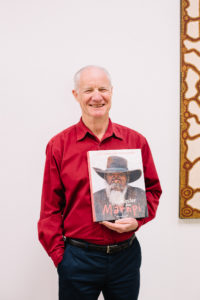
Q: How did you first come to oral history?
I don’t have a ‘first’ recollection. I’ve always been interested in stories and in the 1990s (in my forties) I was drawn to the larger story of Aboriginal art and history in Australia, which I knew very little about. This led to reading autobiographies and biographies of Indigenous people, as well as attending art exhibitions etc. Oral history interviews were often quoted in stories about Aboriginal artists, particularly older people from remote parts of Australia that most of our population knew very little about.
When I began researching the life of an artist whose work I admired, Mick Namarari Tjapaltjarri, I found out he had done two recorded interviews in his language, Pintupi, a decade before he passed away (1998). I found those interviews – or their translated transcriptions – fascinating! What a life he had led… so different to mine. Those interviews motivated me to look around for more oral history work that engaged with Aboriginal artists in particular.
Q: Tell us a little bit about the project you were working on when you attended the Advanced Oral History Summer Institute.
I attended the Institute in 2010, in part with support of a travel grant from my institution, The Australian National University in Canberra, where I was undertaking a doctoral program in Interdisciplinary Studies. My thesis project was the life and art of Mick Namarari Tjapaltjarri. I had a rough draft of his life story by that stage, and I was mostly preoccupied with assembling the chronology of events, rather than comprehending his character.
Q: How did your work benefit from the Summer Institute?
One thing I still remember from one of the guest lecturers was about ‘listening and hearing’ when working with recorded interviews. And with so many conversations with fellow participants about each other’s projects, I realised I was not fully engaging with the materials I had at hand. So, I when I returned home to Sydney I took a more rigorous approach.
I went back to the original recordings of Namarari (one audio, one video), and the transcripts, and tasked myself to see and hear more than I had before. To not only track events and incidents and the chronology of his life story, but to look beneath and between the lines and sounds for character and personality traits, for nuanced references to culture, to allusions to relationships with other people. I said to myself, ‘These two interviews are like gold, I need to use them to the fullest’. So the Institute motivated me to be much more dedicated to the oral history component of the biographical research about Namarari’s life and art. This certainly improved the quality of my writing when I was integrating Namarari’s voice into a wider story that involved multiple voices and archival sources.
Another outcome too. Oral history as a data-making history-creating method became more important to me. I don’t think I was an expert practitioner, so I tried to improve the quality of my interviewing work. This involved better planning of interviews and better conduct as the interviewer. Also, I saw that I had an opportunity to contribute to the field in a meaningful way.
The region where Namarari lived is called the Western Desert. It occupies a vast swathe of Central Australia. (Bigger than Texas!) My field work took me to that region, first by air to Alice Springs, and then by four-wheel drive (essential for the outback gravel roads). I realised I could do additional oral history work outside my specific research project as part of my travels. During 2011-13 I was awarded two oral history grants by the Northern Territory Government, which I applied to producing two community oral history reports: for the desert communities of Mount Liebig and Kintore. I interviewed some twenty Aboriginal and non-Aboriginal people and submitted a report, and deposited the interviews with the Northern Territory Archives Service in Darwin. I hope that one day a community member or researcher will come along who wants to write a local history of those places and find those interviews… they can then serve a good purpose. Importantly, but sadly, some of the people I interviewed have passed away.
Q: What’s the status of your project now?
My project, to produce an authorised biography on the life and art career of Mick Namarari Tjapaltjarri, is complete! The master from Marnpi was released on 7 September 2018.
See my website for more information www.alecohalloran.com
Q: How did your biography, The Master from Marnpi, benefit from the use of oral history?
Namarari passed away in 1998, before I started my research, so I never met him and I could not interview him. This contrasts sharply with the majority of Aboriginal artist’s biographies in recent decades in Australia – they are invariably deep collaborations between the author and subject.
My narration of Namarari’s life story is based on his testimony: two interviews recorded in Pintupi, in 1989 and 1992, each conducted in the Western Desert by non-Aboriginal researchers who had travelled there for that purpose (and to interview other Aboriginal people of the area).
Thus it is his (translated and transcribed) voice that runs through the chapters. The many gaps are filled, where possible, with other oral history interviews I did with his relatives, and with art advisers who worked with him across his art career (1971-1998). I also drew on other oral histories, both my original interviews and from the archives, to enrich the narrative, applying more details to local histories of place, and shining a light on prevailing attitudes and circumstances that Namarari and his Aboriginal countrymen found themselves in. Where possible, I added salient photographs from a wide range of archives to illustrate what was referred to in the text by people who were ‘there at the time’.
Q: You have some visual components in the book, like maps. How did you weave visual elements with oral history?
The non-text items are: maps (of Australia, and the Western Desert region where Namarari lived), diagrams (eg, the Aboriginal kinship system), tables (eg, Namarari’s annual art output from 1971 to 1998), photographs of people, places (eg, desert scenes, Namarari’s house), and art (primarily his paintings).
The visual components serve to show the reader something of what the story-teller (eg, Namarari or his relatives) was talking about. If it was an important water-source location from his childhood in the 1930s, I would include a photograph. If it was a settlement where he lived in the 1950s, I would look for appropriate pictures from that era. Unsurprisingly there are many more useful photographs from the 1990s than the 1950s.
I applied a policy of sorts to the inclusion of images: it had to illuminate something in the text, rather than being a decorative piece to fill a space. I sometimes juxtaposed images to make a point, such as two artworks that had a subtle feature in common.
Q: What kind of projects do you draw inspiration from?
I have really been preoccupied with my book for several years, so I haven’t been looking for extra inspiration. When I was doing the biographical research I drew inspiration (and understanding) from reading Indigenous autobiographies… they often had the raw truth of historical circumstance from the mouths of those who experienced events and situations and policies.







